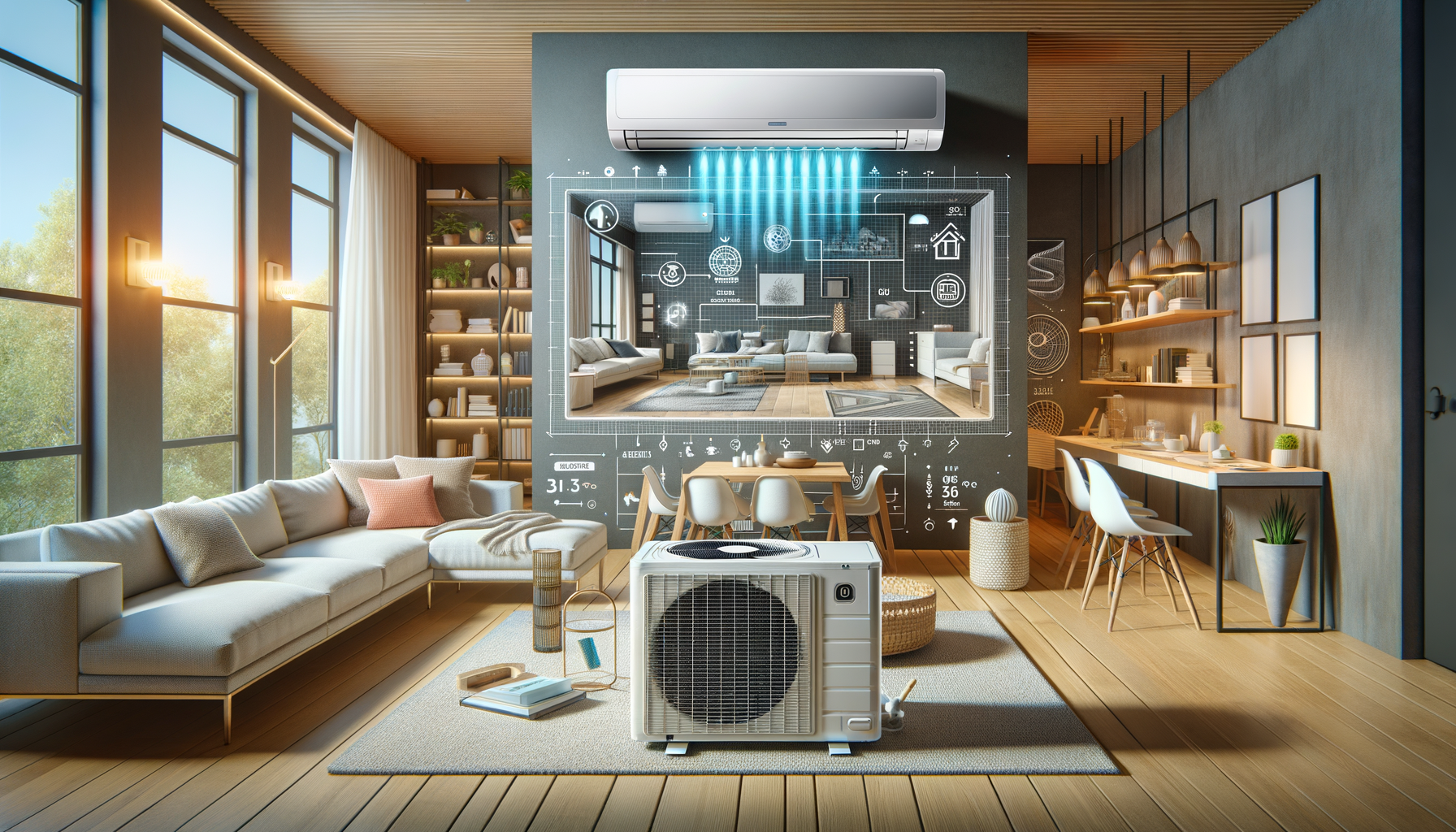Understanding Ductless Air Conditioning Systems
Ductless air conditioning systems, also known as mini-split systems, are a modern solution for cooling individual rooms or zones within a building. Unlike traditional HVAC systems that rely on a network of ducts to distribute air, ductless systems deliver air directly into different zones. This design makes them highly efficient and versatile, catering to the specific cooling needs of each area.
A ductless system consists of two main components: an outdoor compressor and one or more indoor air-handling units. These units are connected by a conduit, which houses the power cable, refrigerant tubing, suction tubing, and a condensate drain. This setup allows for easy installation with minimal disruption to existing structures, making them ideal for retrofitting older buildings or adding air conditioning to new additions.
Ductless systems offer several advantages:
- Energy Efficiency: Without the need for ducts, there is less energy loss, resulting in lower utility bills.
- Flexibility: Homeowners can choose to cool only the rooms they use, further enhancing energy savings.
- Improved Air Quality: Ductless systems often include advanced filtration, reducing dust, allergens, and other particles in the air.
By understanding these systems, homeowners can make informed decisions about their cooling needs, balancing comfort with energy efficiency.
Choosing the Right HVAC Replacement Company
Selecting an HVAC replacement company is a critical decision that affects the comfort and efficiency of your home. With numerous options available, it’s essential to choose a company that aligns with your specific needs and expectations. Here are some key factors to consider:
First, research the company’s reputation. Look for reviews and testimonials from previous customers to gauge their satisfaction with the service provided. A company with a history of positive feedback is likely to deliver quality work.
Next, consider the company’s experience and expertise. An established company with a proven track record is more likely to have the necessary skills and knowledge to handle complex installations and repairs. Additionally, ensure that the company is licensed and insured, protecting you from potential liabilities.
Another important aspect is customer service. A reputable HVAC company should offer excellent customer support, from the initial consultation to post-installation follow-up. They should be willing to answer questions, provide detailed estimates, and offer maintenance plans to keep your system running smoothly.
Finally, compare pricing and warranties. While cost should not be the sole determining factor, it’s important to ensure you receive value for your investment. A company that offers competitive pricing and strong warranties demonstrates confidence in their products and services.
By carefully evaluating these factors, you can choose an HVAC replacement company that meets your needs and ensures a comfortable and efficient home environment.
Benefits of Ductless Systems Over Traditional HVAC
Ductless systems offer several advantages over traditional HVAC systems, making them an attractive option for many homeowners. One of the most significant benefits is their energy efficiency. Traditional systems can lose up to 30% of energy through ductwork, while ductless systems eliminate this loss by delivering air directly to each room.
Another advantage is the ease of installation. Traditional systems require extensive ductwork, which can be invasive and costly. In contrast, ductless systems require only a small hole for the conduit, resulting in a quicker and less disruptive installation process. This feature makes them particularly appealing for older homes or buildings without existing ductwork.
Ductless systems also provide greater flexibility and control. Homeowners can create customized zones, allowing them to cool only the rooms they use. This zoning capability not only enhances comfort but also contributes to energy savings by avoiding the wasteful cooling of unoccupied spaces.
Moreover, ductless systems often include advanced filtration technologies, improving indoor air quality by reducing dust, allergens, and other pollutants. This feature is especially beneficial for individuals with allergies or respiratory issues.
In summary, ductless systems offer a combination of energy efficiency, ease of installation, flexibility, and improved air quality, making them a compelling alternative to traditional HVAC systems.
Installation and Maintenance Considerations
Installing a ductless air conditioning system is generally more straightforward than traditional HVAC systems, but there are still important considerations to ensure optimal performance. Proper installation is crucial, as it affects both the efficiency and longevity of the system.
When planning for installation, it’s important to select the right location for both the indoor and outdoor units. The indoor unit should be placed in a location that allows for even distribution of air throughout the room, while the outdoor unit should be situated in a well-ventilated area to facilitate efficient heat exchange.
Professional installation is recommended to ensure that the system is set up correctly and to avoid potential issues down the line. A certified technician can also help determine the appropriate size and capacity of the system based on the specific needs of your home, ensuring optimal performance and efficiency.
Maintenance is another critical factor in the longevity and efficiency of ductless systems. Regular cleaning of the filters and coils is essential to maintain good air quality and system performance. Many manufacturers recommend professional maintenance at least once a year to address any potential issues and to keep the system running smoothly.
By considering these installation and maintenance factors, homeowners can enjoy the full benefits of their ductless systems, ensuring a comfortable and efficient home environment.
Cost Considerations and Long-term Savings
While the initial cost of a ductless air conditioning system may be higher than traditional systems, the long-term savings often justify the investment. Ductless systems are known for their energy efficiency, which translates into lower utility bills over time. The absence of ductwork reduces energy loss, allowing for more efficient cooling and heating.
Additionally, the zoning capability of ductless systems allows homeowners to cool only the areas they use, further enhancing energy savings. This feature is particularly beneficial in larger homes where certain rooms may be used infrequently.
Another cost-saving aspect is the reduced need for maintenance and repairs. Traditional HVAC systems can suffer from duct-related issues, such as leaks or blockages, which can be costly to repair. Ductless systems eliminate these concerns, resulting in fewer maintenance expenses over the system’s lifespan.
Moreover, many utility companies offer rebates and incentives for installing energy-efficient systems, helping to offset the initial cost. It’s worth exploring these options to maximize savings.
In conclusion, while the upfront cost of a ductless system may be higher, the long-term savings in energy bills, maintenance, and potential rebates make them a financially sound choice for many homeowners.




Leave a Reply